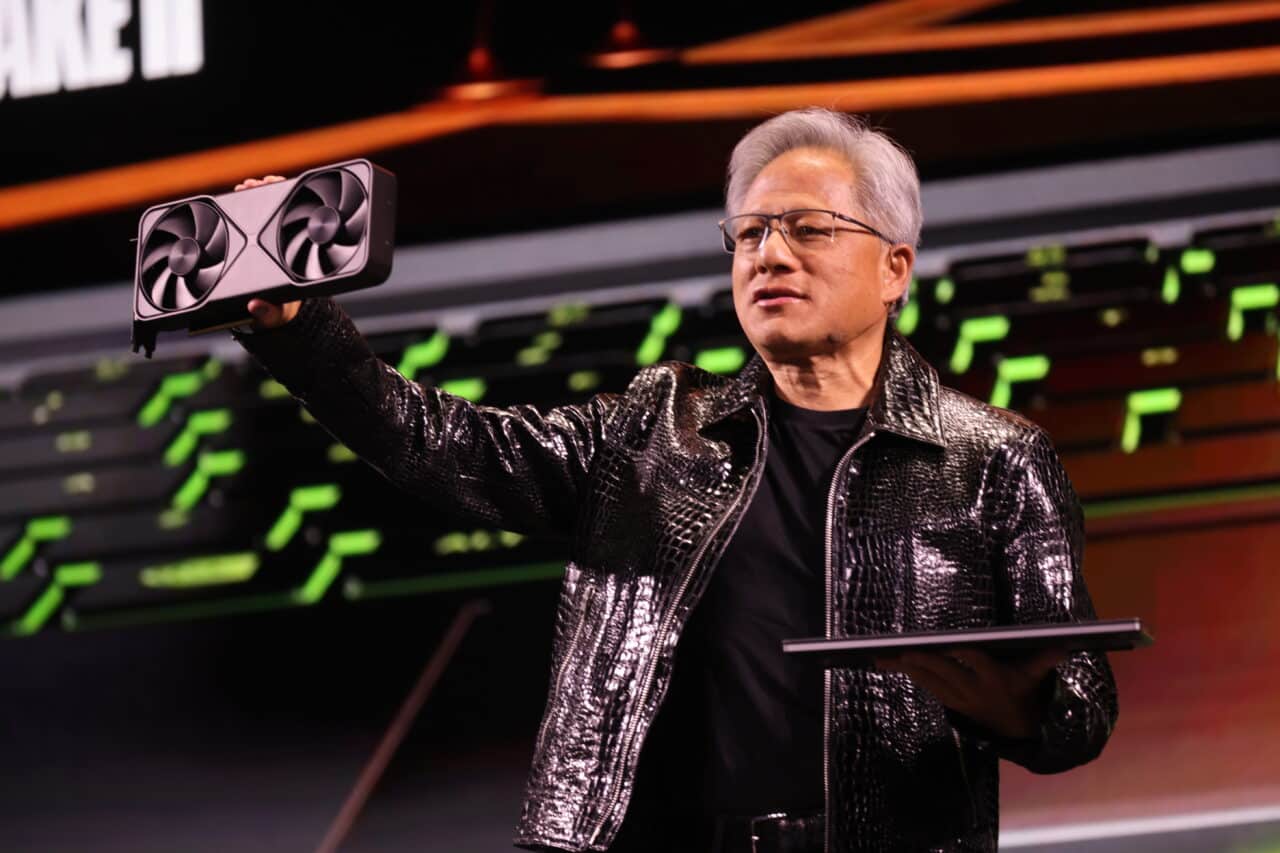The former U.S. president admits he planned to split NVIDIA’s dominance in AI, but backed off after realizing the scale of its ecosystem and the strategic leadership of its CEO.
In an unexpected turn revealed during the latest AI summit in Washington, Donald Trump confessed that his administration considered the possibility of breaking up NVIDIA to curb its hold on the AI sector. However, after learning about Jensen Huang’s crucial role—CEO and founder of the company—he abandoned the idea and instead praised his vision as a driving force behind U.S. technological leadership.
“I thought we could break them up a bit, introduce some competition. Then I found out it wasn’t that simple,” Trump said during the AI Summit. “Once I understood who Jensen Huang was and what he had built, I changed my mind. You just can’t compete with that.”
A threat to tech hegemony… that never materialized
Sources close to the presidential circle indicate Trump viewed NVIDIA’s dominance in AI hardware and software as a significant structural barrier for new competitors. The initial plan was to foster an alternative ecosystem by promoting the creation of new companies with top-tier talent. But NVIDIA’s deep tech stack and Huang’s leadership proved this strategy unfeasible.
Trump publicly acknowledged that, after understanding Huang’s role in developing technologies like CUDA, he became convinced that NVIDIA’s supremacy is not the result of monopolistic practices but rather a visionary gamble maintained for more than two decades.
CUDA and vertical integration: the foundation of NVIDIA’s dominance
Since the introduction of CUDA in 2006, NVIDIA has built a comprehensive ecosystem of hardware, development tools, optimized libraries (cuDNN, TensorRT, NCCL), frameworks for generative AI, and cloud platforms such as DGX Cloud and NIMs. This vertical integration has enabled NVIDIA not only to lead the market but also to set the pace for innovation in AI, HPC, and scientific computing.
With a market capitalization surpassing $4 trillion, the company has become the central node of the new computational paradigm. Its Hopper and Blackwell architectures, along with the Grace Hopper platform for CPU-GPU superchips, are redefining performance boundaries in data centers, foundational model training, and edge computing.
An unexpected but pragmatic political backing
Although Trump’s relationships with big tech firms have historically been strained, NVIDIA appears to be an exception. Instead of promoting its fragmentation, the former president has chosen to recognize its strategic value for national security and American competitiveness.
“Jensen is what sets the U.S. apart from the rest of the world. He’s our unique factor,” Trump said in an unusually complimentary tone.
The current administration, according to industry sources, is working closely with NVIDIA to strengthen the local supply chain, including incentives for domestic manufacturing and agreements with TSMC Arizona. The geopolitical reshaping of silicon positions NVIDIA as a key element in the U.S. strategy against China.
Too big to compete?
Trump’s reflection summarizes a growing industry concern: NVIDIA not only leads but sets the course. Its competitive advantage isn’t just in hardware but in controlling the full AI stack—something neither Intel, AMD, nor hyperscalers have managed to replicate so far.
Rather than waiting for direct competition to emerge, the tech ecosystem is aligning with NVIDIA, integrating its APIs, optimized models, and tools into their own environments. The result is an increasing dependence on NVIDIA’s standard for developing and deploying AI at scale.
The conclusion: the “AI Warlord” who convinced Trump
What started as an attempt to break a tech giant’s hegemony has ended in an unwritten alliance between political power and technological innovation. Jensen Huang has not only built an empire around GPUs but has achieved something even more challenging: becoming a respected geostrategic actor—even among those who traditionally distrust corporate power in Silicon Valley.
With implicit government backing and an unstoppable technological roadmap, NVIDIA’s future under the new administration looks more secure than ever. The “AI Warlord,” as some industry insiders call him, has shown that the best defense against fragmentation is a forward-looking vision that anticipates the future before others grasp the present.
via: noticias.ai

